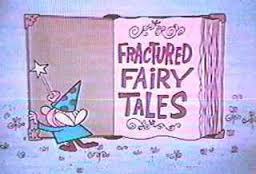“And now for something we hope you’ll really like!”
If you read that line the cheery voice of Rocket J. Squirrel, you are probably a fan of The Rocky and Bullwinkle Show. And you probably know that after that announcement, a short fairy tale segment would begin– hello, Fractured Fairy Tales.
![Once Upon a Time . . . [courtesy of toonarific.com]](http://fairytales.byu.edu/files/2014/09/fracturedfairytales1.jpg)
[courtesy of toonarific.com]
As I have watched and analyzed these fractured fairy tales, I have noticed many motifs and themes which are unique to Cold War America. Something that I find interesting that keeps cropping up episode after episode is the contract.
![One of the seven dwarfs wants the wicked queen to sign a contract so she can remain the "fairest of them all." [courtesy of youtube.com]](http://fairytales.byu.edu/files/2014/09/fracturefairytales_contract.jpg)
[courtesy of youtube.com]
This motif is so interesting to me and, like all fairy tales, reflects the values of the society it comes out of. As I’ve done research in American studies, the desires of these fairy tale characters correspond with the desires of many Americans of the 1950s and 1960s–a desire to become rich and famous. The American dream had transformed from the possibility to anyone could succeed and have a better life than their parents to merely getting those fifteen minutes of fame, no matter the cost. Interestingly, Fractured Fairy Tales reflects this change.
I have more research to do on this subject, but I am excited to see where it leads and what conclusions can be drawn from this research. One of the best things about the fairy tale teleography how it has opened up a whole range of new research projects and possibilities–from analyzing Cold War American values to analyzing the different ways Hansel and Gretel have been portrayed in contemporary television. Really, the possibilities are endless and we’ve only just scratched the surface with what we can accomplish.
